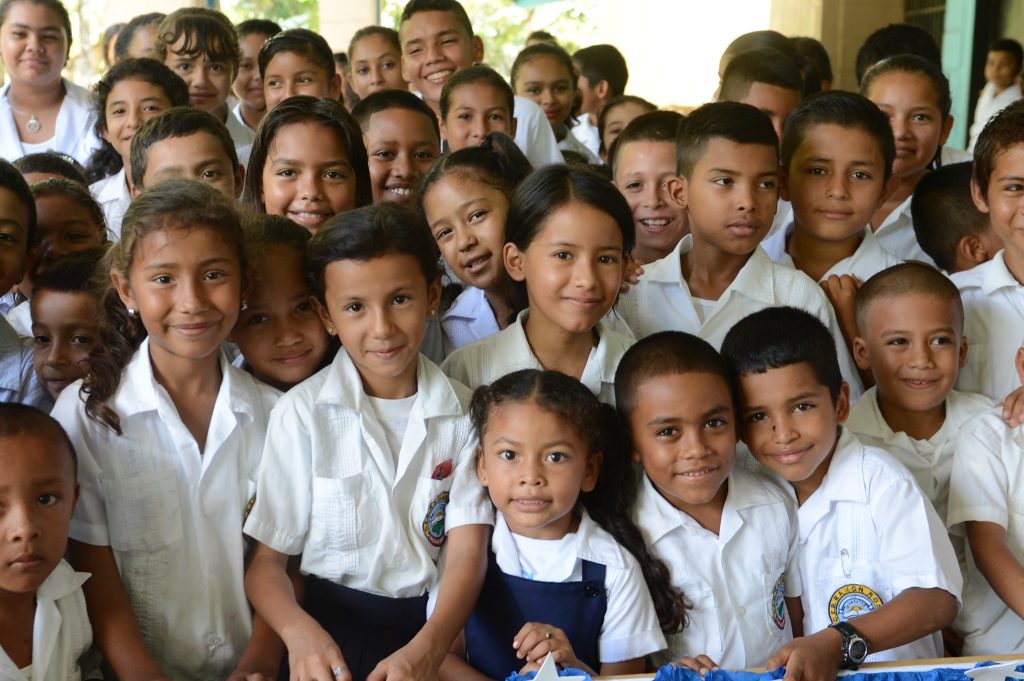Lifting Spirits, Lifting Futures: The Impact of Child Sponsorship
Understanding the lasting effects of child sponsorship programs is essential for evaluating their effectiveness in fostering positive outcomes for sponsored children. By examining the long-term impacts of sponsorship initiatives, researchers aim to shed light on how these programs contribute to the educational, economic, and social well-being of sponsored individuals as they transition into adulthood. Through comprehensive analyses and methodological approaches, studies explore various life outcomes to uncover the multifaceted influences of child sponsorship on the lives of sponsored children and their communities. In this article we delve in The Impact of Child Sponsorship.

The Impact of Child Sponsorship
The Impact of Child Sponsorship: International child sponsorship has emerged as a significant avenue for individuals in developed nations to engage with impoverished communities in developing countries. As of current estimates, there are approximately 9 million internationally sponsored children worldwide. However, the reach of child sponsorship extends beyond these children themselves. It is estimated that up to 100 million individuals, including both sponsored children and their family members, as well as sponsors and their families, are directly impacted by child sponsorship initiatives.
The Impact of Child Sponsorship: These sponsorship programs typically involve regular financial contributions, often ranging from $30 to $40 per month, to non-governmental organizations (NGOs) aimed at supporting the educational, health, and overall well-being of sponsored children. Additionally, certain faith-based sponsorship programs emphasize spiritual mentorship alongside material support. Despite the monetary investments involved, a crucial question remains: Does child sponsorship yield tangible benefits?
Research into the long-term effects of child sponsorship sheds light on its impact. Studies have shown that sponsorship translates into higher education levels and increased future earnings for formerly sponsored children. By examining the life outcomes of over 10,000 adults, including nearly 2,000 children sponsored by Compassion International, researchers found significant positive impacts. These impacts include higher rates of secondary school completion, increased likelihood of white-collar employment, and greater involvement in community leadership roles.
Moreover, sponsored children demonstrate higher levels of hope and aspirations for their future, as evidenced by self-portrait analysis and follow-up studies. The benefits extend beyond education and employment, with sponsored children more likely to live in homes with better amenities such as electricity and improved infrastructure.
In summary, the evidence suggests that child sponsorship programs have a meaningful and lasting impact on the lives of sponsored children and their communities. The support provided not only addresses immediate needs but also fosters long-term positive outcomes, contributing to the overall well-being and prosperity of sponsored individuals and their families.

typical aspects of child sponsorship
Child sponsorship payments typically cover a range of aspects aimed at supporting the well-being and development of the sponsored child. These may include:
- Education: Child sponsorship often includes support for school fees, uniforms, books, and other educational materials necessary for the child’s schooling. This helps ensure access to quality education and opportunities for learning.
- Healthcare: Sponsorship funds may contribute to covering medical expenses, including routine check-ups, vaccinations, medications, and treatments for illnesses or injuries. Access to healthcare services is vital for maintaining the child’s health and well-being.
- Nutritional support: Some sponsorship programs provide assistance for nutrition, ensuring that the child has access to adequate and nutritious food. This may include provisions for meals, food vouchers, or nutritional supplements to address any dietary deficiencies.
- Shelter and basic needs: Sponsorship payments may help cover the costs of housing, utilities, and other basic necessities such as clothing and hygiene items. Ensuring a safe and stable living environment is essential for the child’s overall development.
- Community development: Some sponsorship programs allocate funds towards community development initiatives, such as infrastructure improvements, access to clean water and sanitation facilities, and income-generating projects. These efforts benefit not only the sponsored child but also their family and the broader community.
- Spiritual and psychosocial support: Certain faith-based sponsorship programs emphasize spiritual mentorship and provide opportunities for the child’s spiritual and emotional development. This may include participation in religious activities, counseling services, and support groups.
Overall, child sponsorship payments aim to address the holistic needs of sponsored children, encompassing education, healthcare, nutrition, shelter, and other essential aspects of their well-being. By providing consistent support in these areas, sponsorship programs contribute to the child’s growth, empowerment, and future prospects.
Unveiling Long-Term Impacts: A Holistic Approach to Studying Child Sponsorship Effects
Investigating The Impact of Child Sponsorship on long-term outcomes employed a comprehensive approach. Initially, a sample of 10,144 adults was selected for analysis, including 1,860 individuals who were formerly sponsored children by Compassion International. This sample was crucial for evaluating the effectiveness of child sponsorship programs over time. Additionally, the sample encompassed unsponsored siblings of the sponsored children, children from households without sponsorship but residing in villages where Compassion operated, and children from nearby villages where Compassion did not have a presence.
A significant methodological tool utilized in the study was the age-eligibility rule. This rule stipulated that only children aged 12 or younger were eligible for sponsorship when the program commenced in a particular village. Leveraging this rule enabled researchers to make comparisons between children just below the age cutoff and their slightly older siblings who were not sponsored. Such comparisons facilitated a nuanced understanding of The Impact of Child Sponsorship on various life outcomes, extending beyond immediate effects to long-term implications.
The research delved into diverse life outcomes, encompassing educational attainment, employment status, income levels, community leadership roles, delayed marriage, reduced childbearing, and household living conditions. This broad spectrum of measurements provided a comprehensive assessment of the multifaceted impacts of child sponsorship programs. By analyzing these outcomes, the study aimed to uncover the lasting effects of child sponsorship initiatives on sponsored children as they transitioned into adulthood. Such insights were invaluable for gauging the efficacy and sustainability of child sponsorship interventions in fostering positive long-term development trajectories for sponsored individuals.

Impacting Futures: The Effects of Child Sponsorship on Adult Life Outcomes
The Impact of Child Sponsorship is evident in several significant findings regarding adult life outcomes. Firstly, international sponsorship substantially increased the probability of secondary school completion among sponsored children by 12–18 percentage points over a baseline of 44.5%. This demonstrates the positive effect of child sponsorship on educational attainment, crucial for future opportunities and socioeconomic mobility.
Furthermore, The Impact of Child Sponsorship is seen in the correlation with increased adult white-collar employment by 6.5 percentage points over a baseline of 18.5%. Sponsorship interventions not only facilitate education access but also contribute to securing higher-skilled and better-paying jobs in adulthood. Additionally, sponsorship is associated with an increased likelihood of assuming community leadership roles, indicating broader societal impacts beyond individual economic outcomes.
Regarding economic well-being, The Impact of Child Sponsorship is evident in the notable increase in monthly income among formerly sponsored individuals. On average, sponsored adults experienced a $13–$17 rise in monthly income, representing a significant boost of approximately 20% over an untreated baseline of $75. This increase primarily stems from higher labor market participation, highlighting the role of sponsorship in fostering economic empowerment and financial stability.
Moreover, the study uncovered variations in the impact of child sponsorship across different countries. While sponsorship had the highest impact on income in India, with a 28.5% increase, the results were statistically insignificant in Uganda, Kenya, and Bolivia. This underscores the importance of contextual factors and program implementation nuances in shaping the effectiveness of child sponsorship initiatives.
Overall, the findings suggest that child sponsorship programs can have substantial and lasting effects on various dimensions of adult life outcomes, including education, employment, income, and community engagement. These outcomes underscore the potential of child sponsorship as a tool for promoting long-term positive development trajectories among sponsored individuals.




